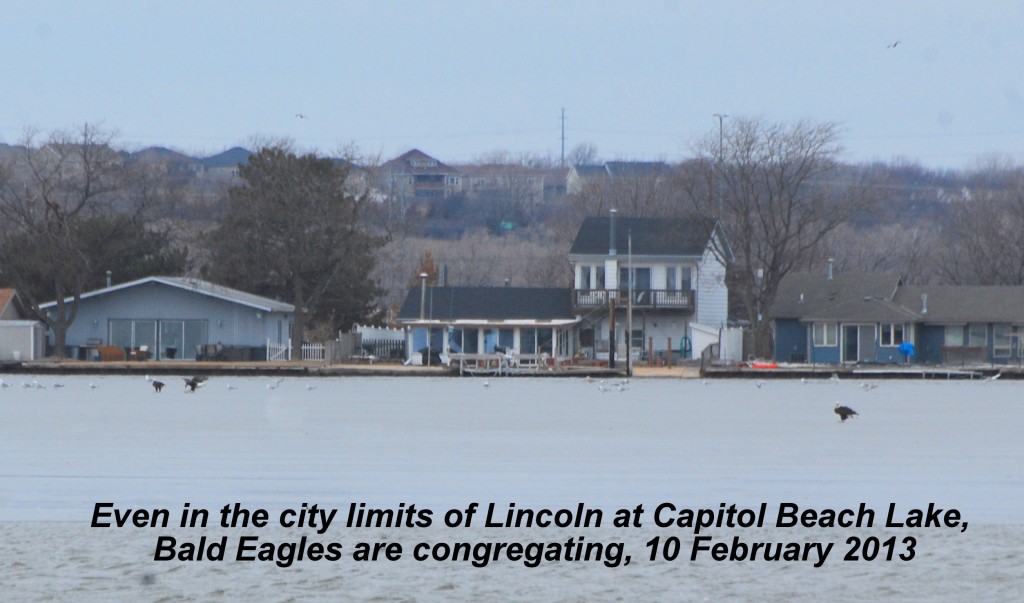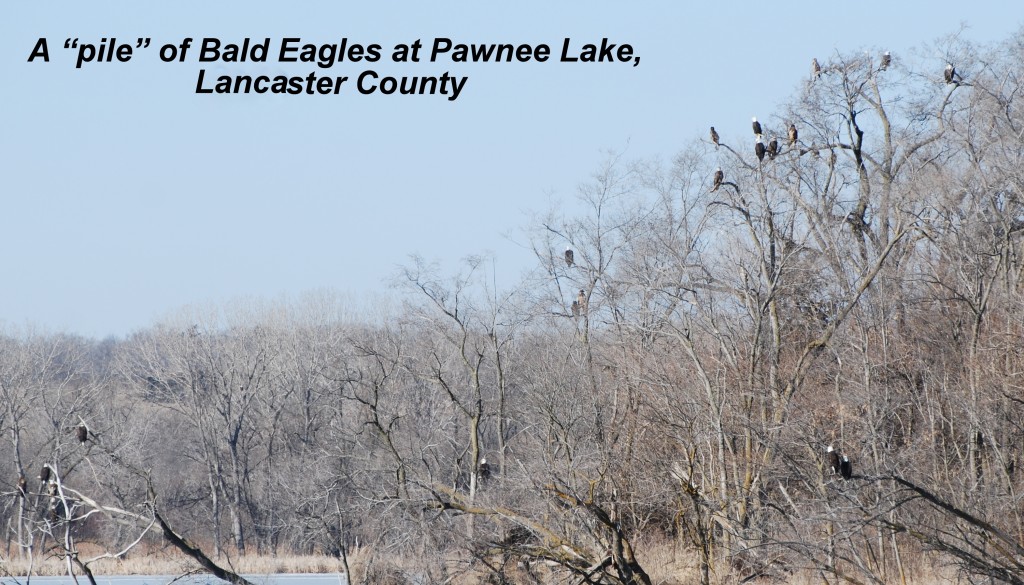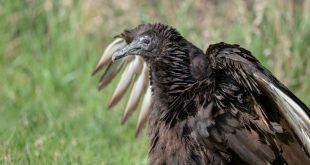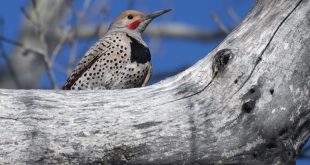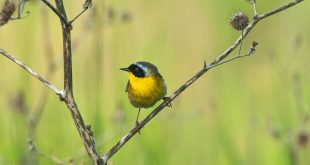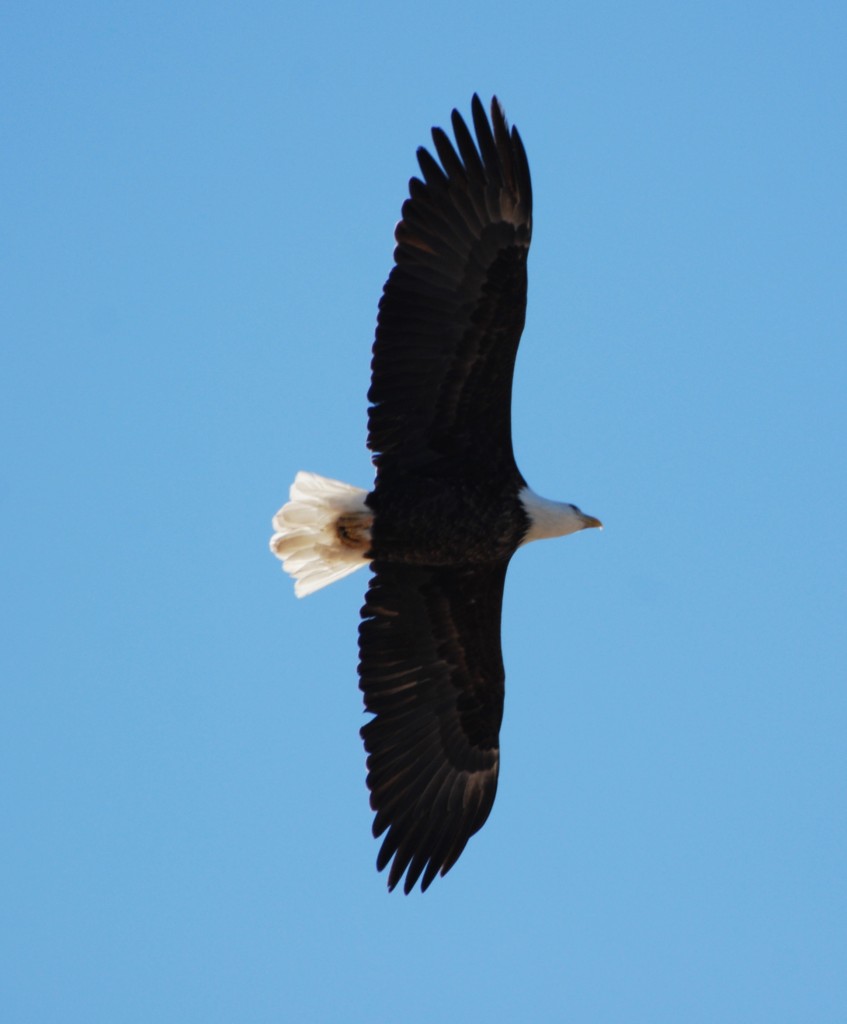 Even though they are increasingly numerous, people still like to watch Bald Eagles. From a general standpoint we have now entered the best period for eagle watching in my view. Yes, during the depths of winter there are the ol’ standard viewing locations such as Lake Ogallala/Lake McConaughy, the J-2 Hydro-electric plant near Lexington, and Gavin’s Point Dam. Those sites are very good, don’t get me wrong. However, we are now in February and with winter’s grip loosening over the past week or so, bird numbers are increasing in Nebraska. This is essentially the beginning of spring migration, with waterfowl, Sandhill Cranes, gulls and Bald Eagles and others making up this the first wave. Every year the timing and magnitude of the “first wave” depends on conditions. In years with harsh winters the wave comes later and vice versa.
Even though they are increasingly numerous, people still like to watch Bald Eagles. From a general standpoint we have now entered the best period for eagle watching in my view. Yes, during the depths of winter there are the ol’ standard viewing locations such as Lake Ogallala/Lake McConaughy, the J-2 Hydro-electric plant near Lexington, and Gavin’s Point Dam. Those sites are very good, don’t get me wrong. However, we are now in February and with winter’s grip loosening over the past week or so, bird numbers are increasing in Nebraska. This is essentially the beginning of spring migration, with waterfowl, Sandhill Cranes, gulls and Bald Eagles and others making up this the first wave. Every year the timing and magnitude of the “first wave” depends on conditions. In years with harsh winters the wave comes later and vice versa.
During this first wave that eagles abundance peaks and they are highly visible. While lakes in the west may be open, those in the east still have some ice. These open patches on area lakes have already attracted returning geese and ducks. Bald Eagles follow migrating waterfowl because it is potential food. Furthermore, winter-killed fish may be frozen in lake ice and when waters begin opening up, the dead fish are easy pickings. As a result, numerous Bald Eagles may be found sitting on the ice around area lakes and reservoirs. More eagles are usually sitting in trees that border lakes. For example, on Saturday (February 9th), there were ten Bald Eagles sitting on the ice at Capitol Beach Lake and this is within the city limits of Lincoln!
The first wave of spring migrants will continue to push north as conditions allow. Thus, it is usually a short time in spring when eagle numbers are very high. Once the ice is all gone in our area, eagle numbers drop. Unfortunately, the strong winds this weekend (February 9-10) may open lakes up quickly, but colder weather later this week may slow down migration some. Nevertheless, now is the time to get out and view eagles. Usually any large water body will provide viewing opportunities.
 Nebraskaland Magazine
Nebraskaland Magazine
